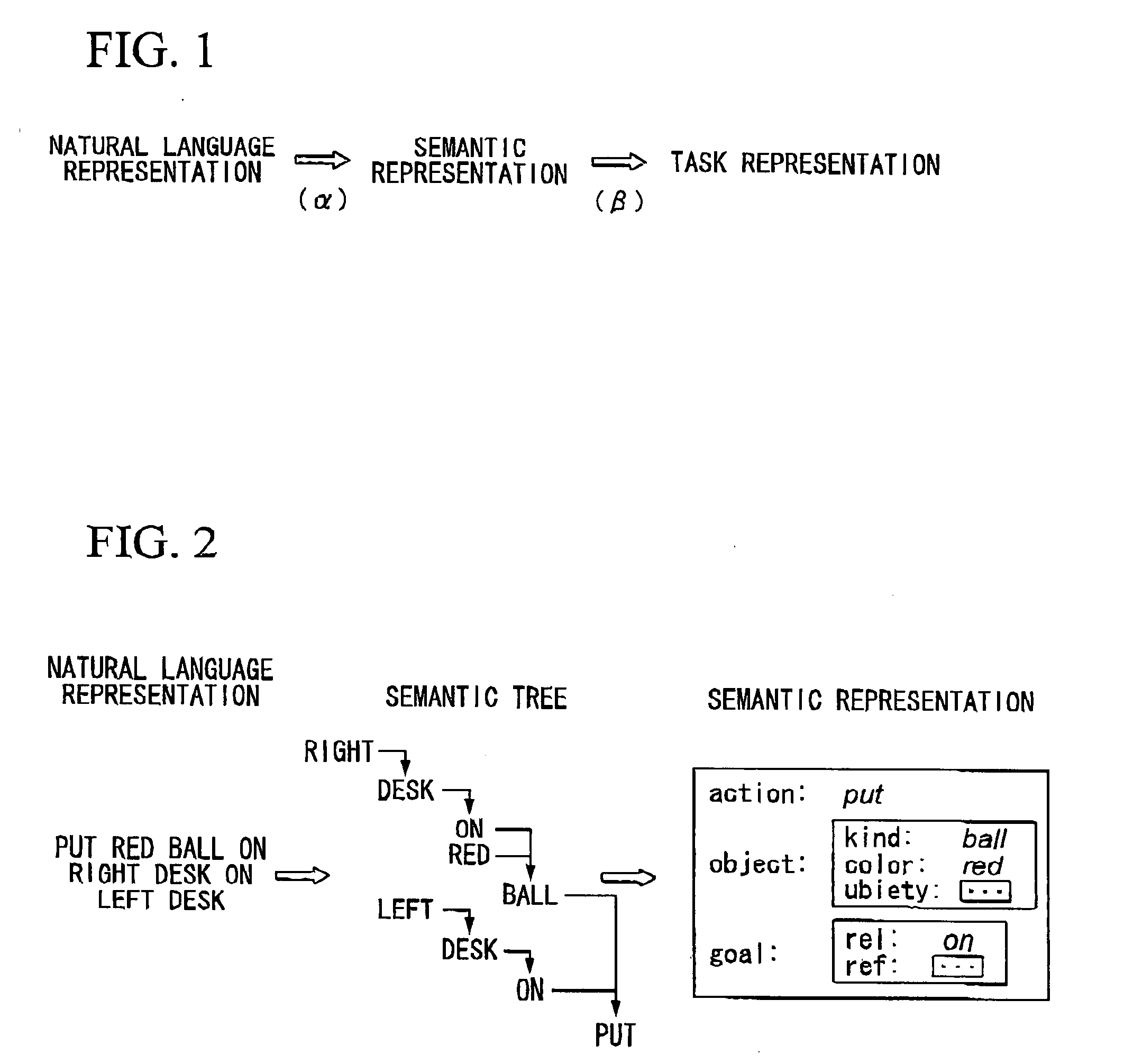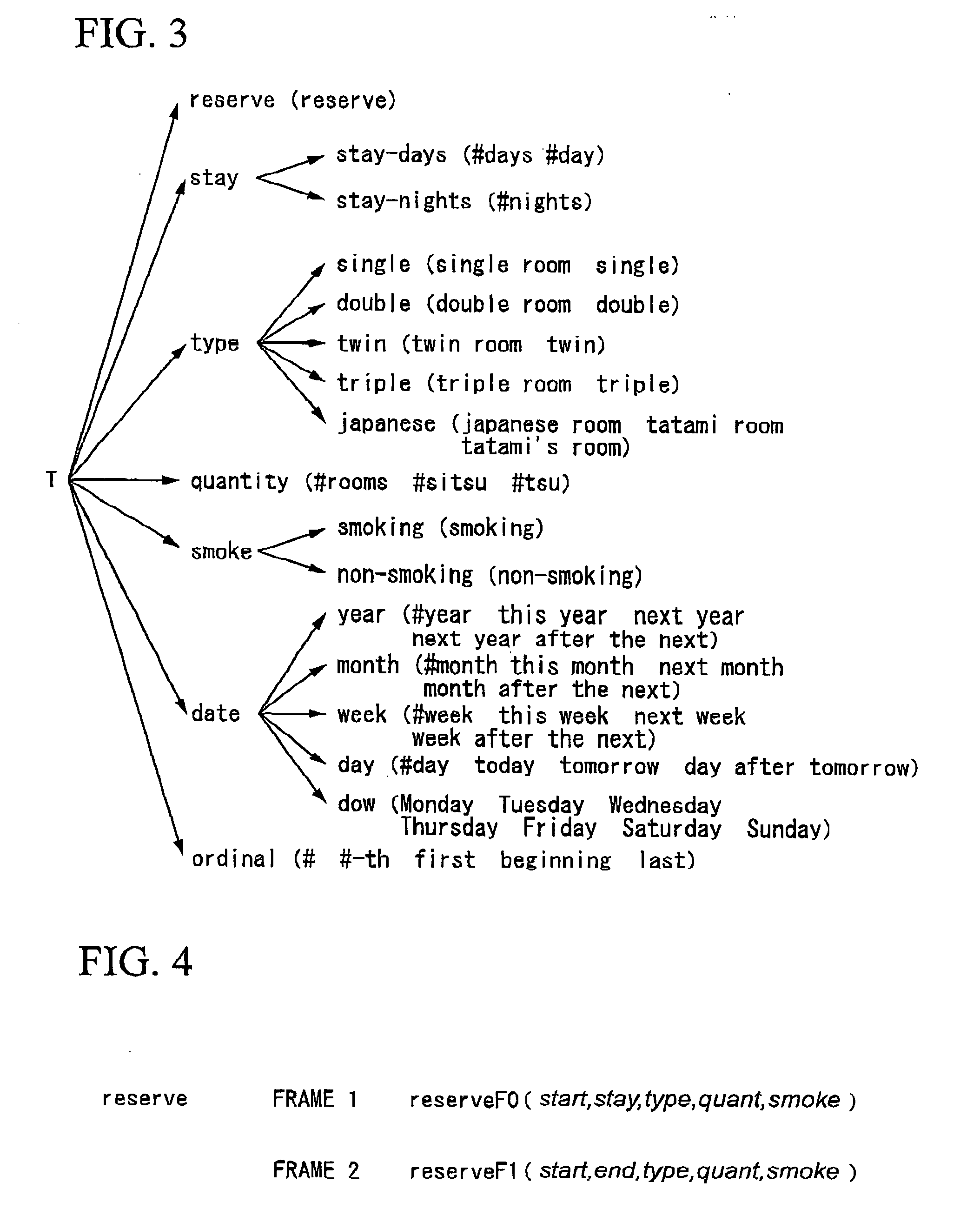Such a system if designed to operate very limited operations, can be constructed relatively easily by using a voice
extensible markup language (
VoiceXML) or the like whereas such a system if designed to be able to understand a little complicated dialogues and languages shall face various problems.
However, existing
software which executes
parsing still suffers lower precision for use in a dialogue system, and is difficult to satisfactorily operate for
a domain to be locally handled without troublesome adjustment.
Without using parsing, however, dialogues cannot go beyond the level which is carried out with an enumeration of keywords.
The parsing system directly handles
syntax recursiveness and semantic synthesis, and can therefore
handle complex and multifarious language representations while it is not easy to construct and maintain and generally has lower robustness.
Further, as the parsing system is premised on synthesis, it is weak on understanding a non-synthetic representation.
First, the problems of the parsing system will be described.
Because creating a parser from the scratch results in a large cost, this option is not so practical unless a special function the general parser does not have is needed.
The use of a disclosed parser has a problem too.
However, those accessory grammars are created based on writing corpuses, such as news articles, and have a poor parsing accuracy in a dialogue system which handles spoken languages, particularly, in a spoken dialogue system.
While addition of a
proper noun is relatively simple, handing a phrase is not easy.
It is possible to make a grammar, but it is not an easy work to describe grammatical rules while eliminating an interference between rules and an unintended behavior.
Because those approaches need accurate and narrow
annotation supported by huge corpuses and a linguistic knowledge, however, they are not practical options in consideration of the construction of
a domain-limited dialogue system.
The most significant reason for the difficulty of constructing a
semantic representation generator is the inconsistency between the structure of
a domain concept and a
syntax structure.
This problem is likely to occur when an existing general-purpose parser is used.
In case of “weather in Tokyo tomorrow”, the result of dependency analysis shows that there are two cases: one where “Tokyo” is applied to “tomorrow” and the other where “Tokyo” is applied to “weather”, and it is difficult to previously know which one is output.
As mentioned previously, however, it is difficult to manually adjust grammatical rules.
In addition, allowing a parser to learn demands a vast amount of data.
Creation of data demands an additional work, such as
annotation, as well as collection of data, and is thus very troublesome and
time consuming.
Generally, taking this approach needs difficult and tiresome
programming to construct a semantic representation generator.
Further, the constructed semantic representation generator contains a lot of exceptional processes, making the
reusability in other domains lower.
However, the technology of the Non-
patent Document 1 cannot overcome the aforementioned problems.
That is, while the technology of the Non-
patent Document 1 tries to increase the robustness while keeping the parsing accuracy by the two-stage use of the parsing system and the template system, it faces the problem that keeping understandable complexity and the robustness cannot be satisfied at the same time.
In other words, while robust understanding of simple representations is possible, robust understanding of certain complex representations is not possible except for omission of a particle or inversion.
 Login to View More
Login to View More  Login to View More
Login to View More 


